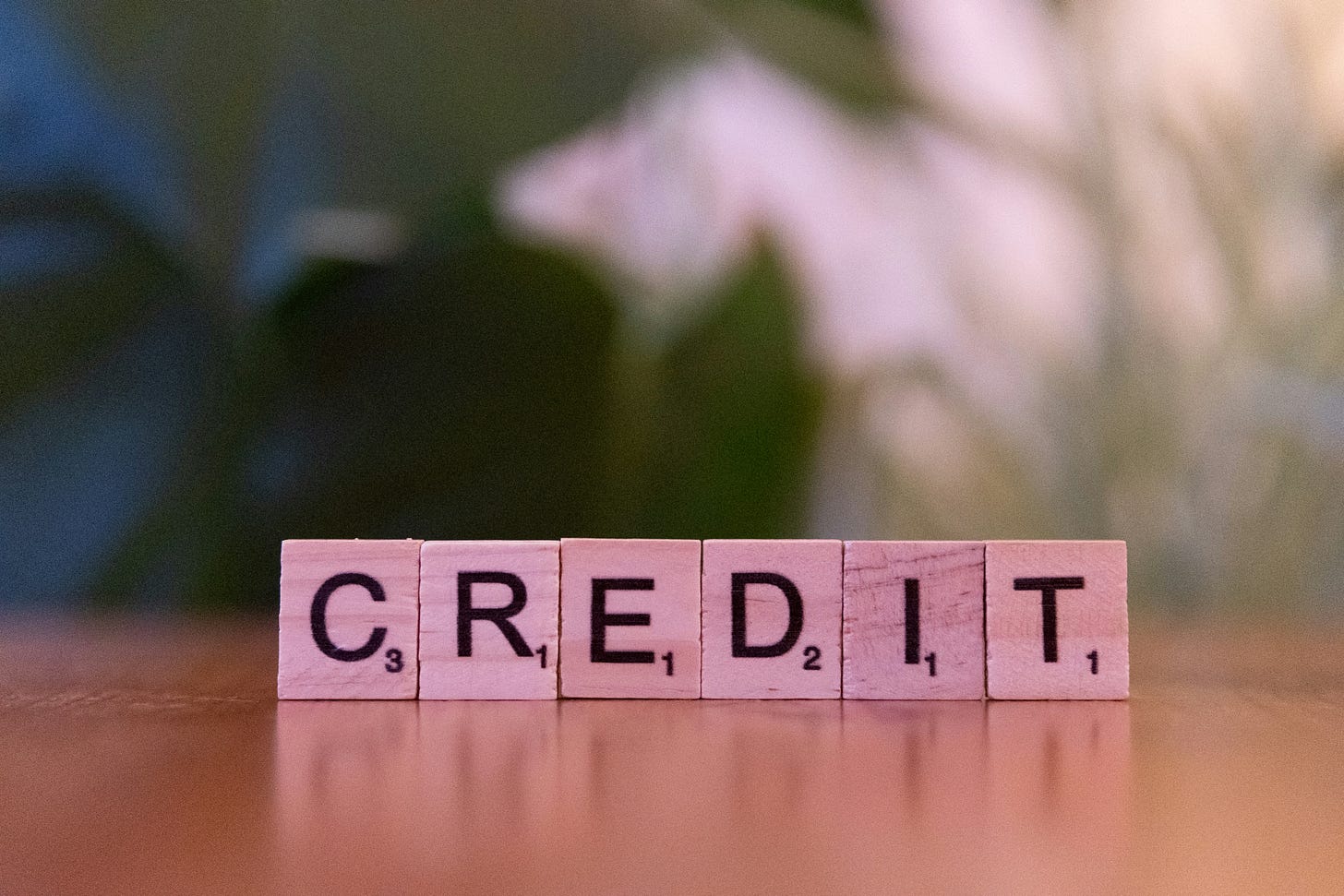Who buys a bad loan?
Bad loans and how to hide them
If you missed Friday’s newsletters, catch up here.
And if this newsletter was forwarded to you, subscribe here for free:
TOGETHER WITH CREDIT DIRECT
Ever felt blindsided by a loan rejection? We built Know Your Limit so that never happens again.
It’s credit with clarity—Upfront, honest, and zero ego bruising.
Boring by design
Banking is boring by design. Your bank collects deposits, lends those deposits (carefully), and earns a spread. That basic model has barely changed in centuries, and it works because everyone involved agrees not to get too clever.
But clever people always show up eventually. And so, to keep the whole thing from catching fire, banks are regulated to within an inch of their lives. If you’re going to hold people’s life savings, there need to be rules. Don’t lend too much to one person. Don’t bet the entire bank on oil prices. And definitely don’t allow more than 5% of your loan book go bad.
That’s the Central Bank of Nigeria’s hard line: if more than 5% of your loans are classified as non-performing (i.e. no repayment in 90+ days), you're officially in trouble.
So, how do Nigerian banks keep their NPLs magically under 5% in a country where political, economic, and operational risk hang in the air like Lagos humidity? That’s where the accounting gymnastics begin.
When a loan goes bad, the bank stops counting the interest it expected to earn. It sets aside some money, a “provision”, just in case the loan is never repaid. And eventually, if things don’t improve, it classifies the loan as non-performing. That classification tells the world the bank has made a bad bet.
To avoid showing too many of those bad bets at once and to avoid the embarrassment (and regulatory headaches) of reporting too many NPLs, banks lean on old tricks.
They might restructure the loan, giving the borrower more time and calling it a new deal. They might give the borrower a second loan just to repay the first (yes, really). Or, in some cases, they quietly pass the problem along to someone else, for a price.
In the U.S., banks don’t even wait for the loans to go bad. American banks have perfected the art of offloading loan risk almost as soon as the loan is made. Several loans are bundled as investment products and sold to pension funds or insurance companies. Others are pushed off the books using credit default swaps or loan participations; financial tools that say, in effect, “If this borrower defaults, you cover it, not us.”
The bank still originates the loan. It still gets its fee. But the risk, the part where someone might not pay back, now sits with a hedge fund or private equity firm (If you have not watched The Big Short, Too Big to Fail, and Margin Call, consider this a stripped-down spoiler). It’s a narrower, safer kind of banking: the bank lends, and someone else worries about repayment. Everyone goes home with clean hands and a balance sheet to match.
In Nigeria, banks still mostly do it the old-fashioned way: they keep the loan on the books, hope for repayment, and scramble when the borrower disappears. It’s only when the loan starts to rot that someone else gets involved.
Which brings us to the weirdly fascinating business of buying (bad) loans.
In 2010, at the peak of Nigeria’s banking crisis, the government created a cleanup crew: the Asset Management Corporation of Nigeria (AMCON). It was a national “bad bank,” designed to scoop up toxic loans, recapitalise the banks, and restore confidence.
Over time, AMCON bought up about ₦4 trillion worth of bad loans (it paid just ₦1.76 trillion for them). That’s like buying a bag of rice for ₦1,000 for ₦440 because it’s full of stones. That’s what AMCON did at scale.
Since then, AMCON has clawed back over ₦1.8 trillion through asset seizures, court cases, and strategic resurrections of half-dead businesses. It even once owned Arik Air and tried to launch a replacement airline, NG Eagle, just to get the value out. In other words, AMCON’s job was to turn financial trash into something vaguely usable.
For years, it was the most recognisable buyer of bad loans, but news from last week showed that fintech BFree has made progress in the business of buying bad loans since it first tried to buy Union Bank’s bad loans in 2023.
For a while, BFree’s story was about ethical debt collection, a curious pitch in a country where debt collection is often code for harassment. (You know those Palm Pay and LAPO MFB memes)
The usual playbook in Nigeria involves calling your relatives, blackmailing you with fake legal threats, or outing you to your employer. So when BFree said it was building “AI-driven ethical debt recovery,” the general reaction was: good luck with that.
In February 2024, TechCrunch wrote:
“The startup’s AI models forecast repayment, enabling it to identify and pursue viable accounts while referring others to external collections agencies. Its ethical approach to debt collection also emphasises using digital communication and avoiding shaming tactics such as debt shaming or contacting a borrower’s personal connections.”
Buried deeper in that same article, though, was a more revealing line:
“The company had also started acquiring defaulters’ portfolios from banks and digital lenders, a line of business it planned to scale.”
Let’s touch on the ethical collection scepticism a little. Plenty of digital lenders believe it takes more than asking nicely to get your money back in Nigeria.
In a country with no working bankruptcy system, fragmented credit bureaus, and few legal or reputational consequences for default, lenders have long relied on shame to recover debts.
Even AMCON, with all its federal backing and court powers, has used unorthodox methods to force repayments.
In June 2012, AMCON released its first-ever list of top debtors. The names: Nestoil, Geometric Power (₦18.6 billion), and others, were splashed across newspapers. It was Nigeria’s earliest public reckoning with just how far corporate credit had wandered off course.
Then, in 2015, under pressure from the Central Bank, AMCON and commercial banks launched a coordinated “name and shame” campaign, publishing lists of chronic defaulters in full-page newspaper ads. If the courts couldn’t make you pay, maybe embarrassment would.
It ran on the idea that pressure would produce results.
But there’s only so many times you can publish names before shame gets old. Thankfully, we’re in the age of AI.
Last week, BFree announced it had secured $3 million in debt financing from Verdant Capital Hybrid Fund to buy and fund non-performing loan portfolios from leading commercial banks and digital lenders in BFree’s existing markets.
“Bfree utilises a loan portfolio pricing model which uses proprietary data to predict repayment rates for the distressed loan portfolios. Since its incorporation five years ago, Bfree has experienced remarkable growth, serving over 6.6 million borrowers with an estimated loan portfolio value of over $740 million across its markets of operations.”
BFree’s model works by buying cheap debt and recovering enough of it to turn a profit. If it buys ₦1 billion in bad loans at 10% face value and recovers 30%, that’s a win. The borrowers may get a softer experience, but the business is still about squeezing value from distress. It’s just... nicer about it.
The fact that companies like BFree can even exist tells us there’s a thriving secondary market for bad loans in Nigeria. Banks and lenders don’t want the reputational hit of reporting ballooning NPLs. And they don’t want to spend years chasing borrowers through a legal system that moves at the speed of dial-up internet. So they sell. Quietly. At a discount.
In some ways, BFree is just AMCON in skinny jeans, minus the court orders and national mandate. But the goal is the same: take someone else’s toxic loan book, work it over, and see if anything useful can be salvaged.
AMCON was created out of necessity, a one-time solution to a banking system in crisis. BFree, on the other hand, is stepping into the same space by choice. In AMCON’s day, buying bad loans was a form of economic triage. With BFree, it’s a model that believes a mix of algorithms and private capital can monetise bad loans.
It’ll be interesting to see a secondary credit market where loans don’t die, they just get resold, repriced, and worked over by someone with better timing.
For the banks, this is great. It helps them stay under the 5% NPL threshold, clean up their books, and move on. For the fintechs buying the debt, it’s a chance to prove that there’s money to be made in the long tail of Nigeria’s credit.
Oh, and by the way, if you wonder why this is important, ask your friends who are Zenith, Access, and Fidelity bank shareholders, what the last month has been for them due to the latest CBN memo on the relationship between NPLs and dividend payments.
Let me know what you think in the comments.
That’s it for this week. See you next Friday!






Learnt something new today! Really enjoyed this piece!
Interesting play! I wish BFREE all the best.